Meze Elite (with Arctic Cables Grandis)
Meze Home page // Arctic Cables Home page
Introduction
The Meze Elite has been out since 2021; a long-time in the world of flagship headphones where trends tend to come and go. Since then, it has been widely acclaimed by both reviewers and users. It is also a headphone that has long since intrigued me, and I was glad to have the opportunity to spend time with it recently, thanks to Meze (and thank you to Alexandra at Meze on this point).
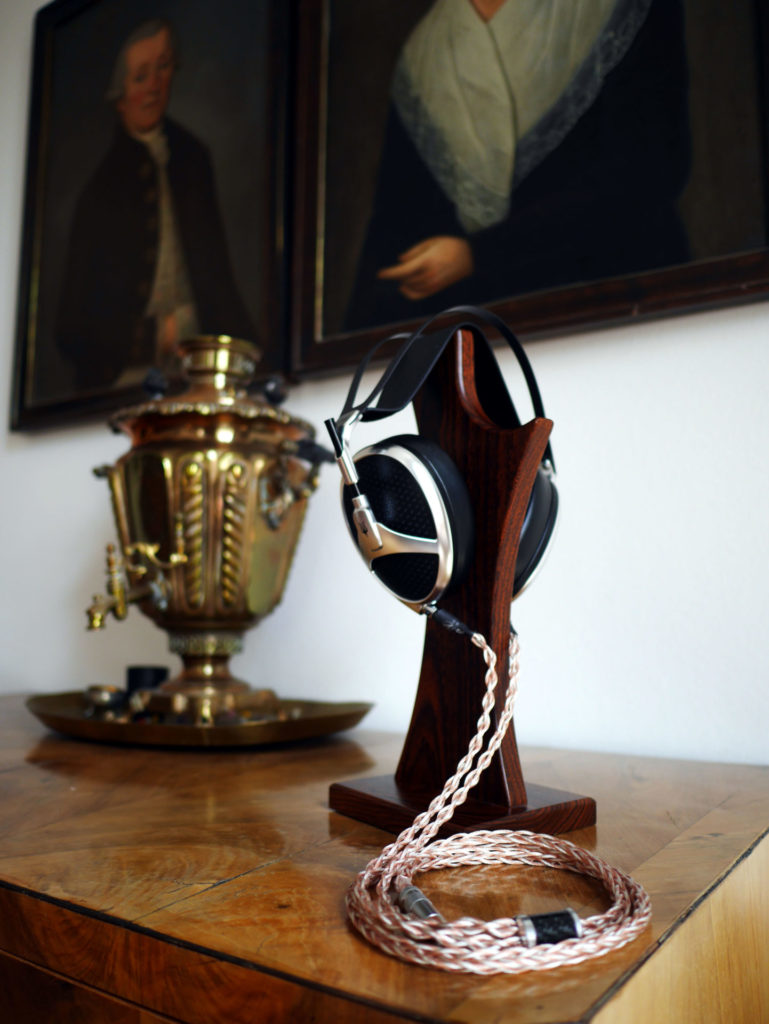
The Elite is Meze’s flagship headphone, and the design, build, and presentation are fitting of this status. Already prior to the Elite, Meze had an excellent reputation for design. Even their entry model 99 Classics have an aesthetic appeal and level of craftsmanship seldom seen in headphones within that price range. The same is no less true of the 109 Pro and the Liric, each model marked by an elegant and refined appearance matched only by the ingenuity of the build itself. One would expect the Elite to take this level of refinement to the next level and they do. Presented in a sleek silver briefcase, the Elite make a striking first impression.
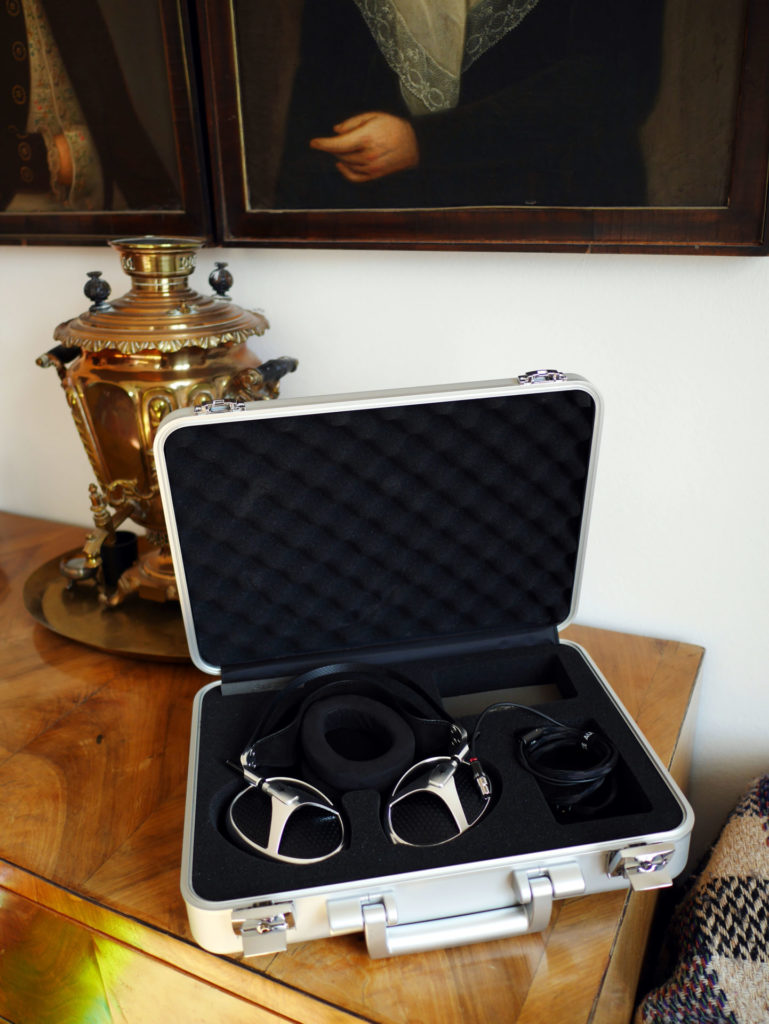
Build and Comfort
Both build and comfort also are impressive and suitably premium. In terms of build, while these are not headphones one wants to throw in a rucksack, they nevertheless inspire confidence in terms of their engineering. What really stands out, however, is comfort. At 430g, these are headphones that can be worn all day without any hotspots, clamp pressure, or other niggling issues becoming a distraction. I can—and have—worn these all day without any discomfort. Indeed, the suspension design of the headband, conceived with Meze’s Empyream, is an engineering marvel even if it looks ostentatious on the head (but then, who would be wearing these in public?)
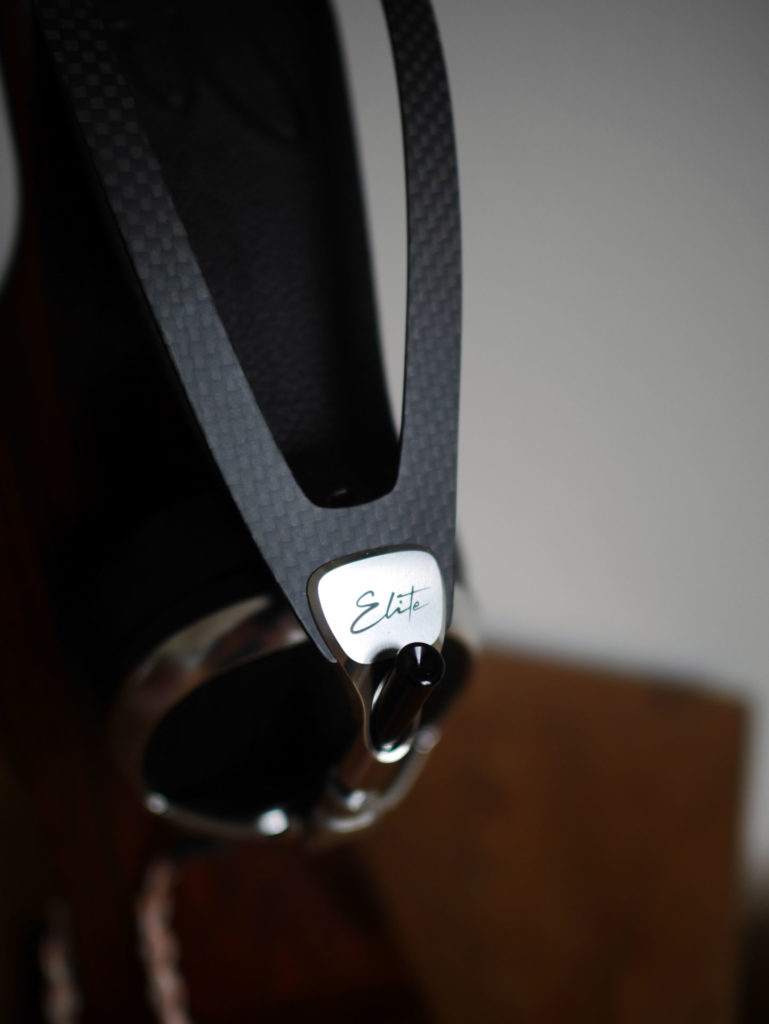
Sound Impressions
“The Sound Of Pure Emotion.” Such is that Meze’s tagline for the Elite. Having spent a few weeks with the Elite, the description is not inaccurate even if it is a bit of marketing blurb. Broadly speaking, the Elite is easy to fall in love with; the overall tonality offers a warmish (but not muddy) presentation that is easy to be seduced by thanks to its non-fatiguing and natural timbre. I could imagine that if a person was starting out on their headphone journey, and wanted to simply find a high-end headphone that was easy to drive, worked on most genres, had excellent comfort, and offered a notable upgrade to entry and mid-tier without having to worry too much about amps and DACs, then the Elite would fit the bill.
The Elite’s tonality manages to straddle a fine line between being warm and engaging without being overly rolled off or congested. At the lower end, the sub and mid-bass is less about visceral impact and slam, and more about tasteful control and refinement. The mid-bass elevation of the Empyream, which was an obstacle for me, has been reined in. As a result, the lower end retains a warm tint, but is now presented without any bloat. Everyone’s favourite bass testing track – Massive Attack’s “Teardrop” – is impactful, well-extended, and well-controlled. The presentation offers a nimble and textured bass presentation with a natural timbre. Likewise, all your favourite Hans Zimmer and Daft Punk tracks have a commanding and tight sub-bass. On genres which don’t accent bass so much—hard rock, for example—the presentation on the Elite is faithful to the source, though at the same time no-one is going to confuse the Elite for an analytical reference machine.

The mids on the Elite are for the most part clean and balanced. Nothing about the Elite is dry or sterile, and this is especially clear on the mids. As I hear it, the mids on the Elite are rather linear, without too much colouring or emphasis. Because the bass exerts a good sense of control, this allows the mids to come to the foreground in a richly textured way. Classic rock and progressive rock, for example, thrives on the Elite (these headphones could have been designed around Pink Floyd’s discography). Guitars especially sound thick and muscular with excellent definition. Nevertheless, while the Elite performs well with most genres, it has limits. Modern rock and metal productions, tend not to suit the timbre of the Elite. Megadeth’s latest album, “The Sick, the Dying….and the Dead,” to give one such illustration, tends to sound rather congested and muddy. Where the Elite’s mids excel is in less technical and more atmospheric genres. Classic rock, jazz, fusion, and ambient all excel. For that matter, vocals shine, especially female vocals. Kate Bush, Tori Amos, Suzanne Vega are all presented with a vivid sense of dynamism and lifelike naturalism.
The top-end of the Elite also straddles a fine line between being engaging and dynamic without being too strident. I have previously found some of Meze’s headphones have tended to be a bit hit or miss on this front. On the Elite, however, a good balance is achieved between sparkly energy and smoothness. The overall presentation is rather laidback but clean, and I can’t imagine anyone finding the Elite sibilant or strident. If anything, one could argue that top end lacks a smidge of energy and dynamism. however, Meze have tuned the Elite in such a way to combine a very natural and somewhat forgiving presentation with a high level of incision and clarity.

The Elite are not a difficult pair of headphones to drive, though they have a reasonable level of transparency and do scale up with different sources. For this review, I mostly drove them from my desktop Bakoon set-up (DAC-9740 with HDA-5210MK4). Bakoon’s current output amplification is specifically suited for planar headphones though I found the Elite sounded good with everything I paired them with. On the Chord Mojo 2 and Mass Kobo 428, the presentation was a tad more neutral with more precise imaging and layering. Coupled with the rare but excellent Acoustic Research AR-M2 DAP, the results were especially impressive combining an authoritative presentation with an engaging musicality.
In terms of technicalities, the Elite is not a detail monster nor does it aim for reference level imaging and layering. The details are there, but tend to be source dependent and more within the level of macro details. This is not to say that the Elite isn’t a resolving headphone, but I think detail junkies will be left wanting. Likewise, speed and dynamics are very solid, but this is not strength of the Elite. Their strength resides in an overall immersive presentation, which relies less on dazzling technical pyrotechnics, and more on an engaging timbre. Staging is also a strength of the Elite. Listen to the opening of Supertramp’s “School” for a good illustration of how well the soundstage expands in both width and depth without losing coherence.
Headphone Comparisons
Since it is immediately available to me and similar to in many respects, the headphone that I was especially keen to compare the Elite to was the Kennerton Thror. These are both flagship open-back headphones retailing for roughly the same amount. The Thror distinguishes itself from the Elite on a number of levels. Above all, it’s immediately clear that when switching to the Thror, the technical performance, transparency, and level of resolution is significantly improved. The Thror offers a slightly more neutral presentation, with less colour in the lower mids, and a little more air in the top end. I think Elite users curious about Thror would likely find the latter somewhat cooler on first listen, but in the same measure, more resolving and more revealing, as well as being more dynamic. Switching back to the Elite, one hears the colour in the lower mids which sounds ever so slightly bloomy until one’s hearing adjusts. Because the level of detail retrieval is more incisive on the Thror, the background feels considerably blacker; details, imaging, and layering are all presented with more precision and clarity. Of course, on a comfort level, there’s no contest – the Elite reigns supreme.
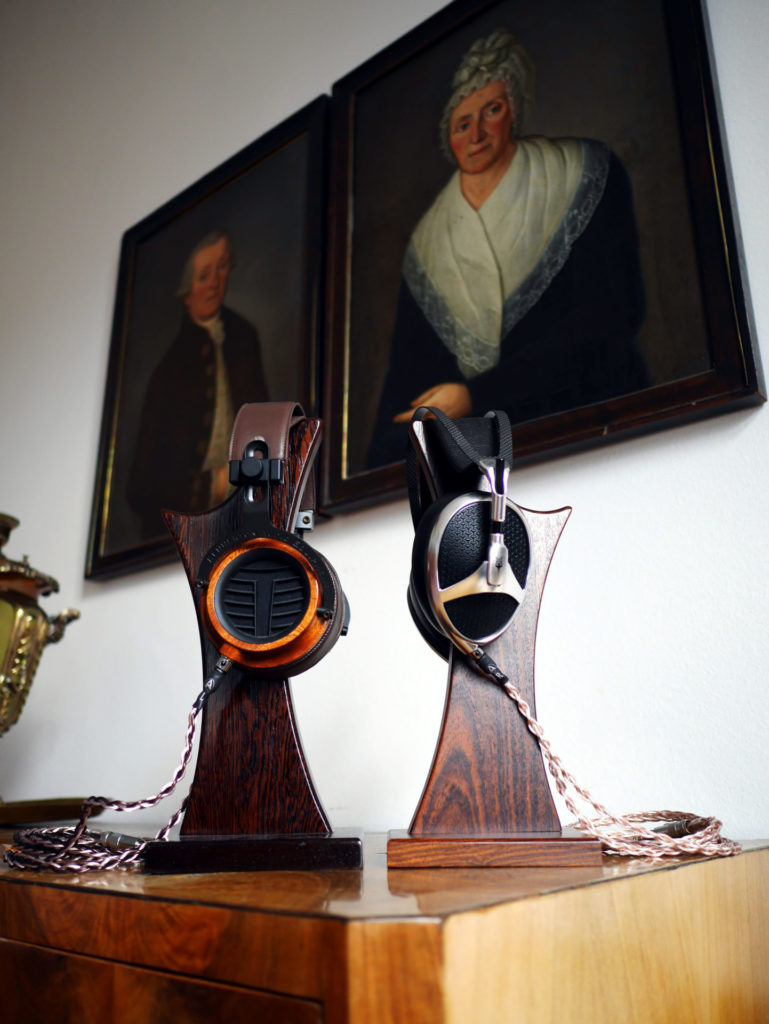
Both the Thror and Elite are outstanding headphones with several aspects in common. Evaluating which one performs “best” is largely a question of taste. Whereas the Thror is more revealing and more resolving, some may find it fatiguing. The Elite, by contrast, is smoother, warmer, and likely more appealing to a wider audience. However, coming from other flagship headphones, others might find it overly smooth and lacking dynamics.
Cable Comparisons
Although the standard OFC cable that comes with the Elite is perfectly adequate, my sense is that the technical performance of the Elite could be enhanced with a higher quality cable. Indeed, I’ve found this to be the case on all the Meze headphones I’ve tried—cable rolling seems to be especially beneficial for one reason or another.
With this in mind, I reached out to Val at Arctic Cables to see which cable he would recommend for refining the Elite’s performance. He suggested the new Grandis cable. This is a 20AWG 50/50 silver/copper hybrid Litz of the highest purity. It also has an infused kevlar central core and improved TPU insulation.

As with all of the cables from Arctic Cables, the build on the Grandis is majestic but refined. The particular Grandis I received is terminated on the source side with a rhodium Oyaide 1/4″ plug and on the headphone side with Furutech’s FT-610mF plugs. All of these plugs have a robust feel and implemented into the cable itself flawlessly. Although this is a hefty cable designed for desktop use, in the hand it actually feels incredibly ergonomic and quite supple. Indeed, the tactile feel of the Grandis is truly pleasing to the touch. In use, the Grandis is devoid of any microphonics and is immensely comfortable.
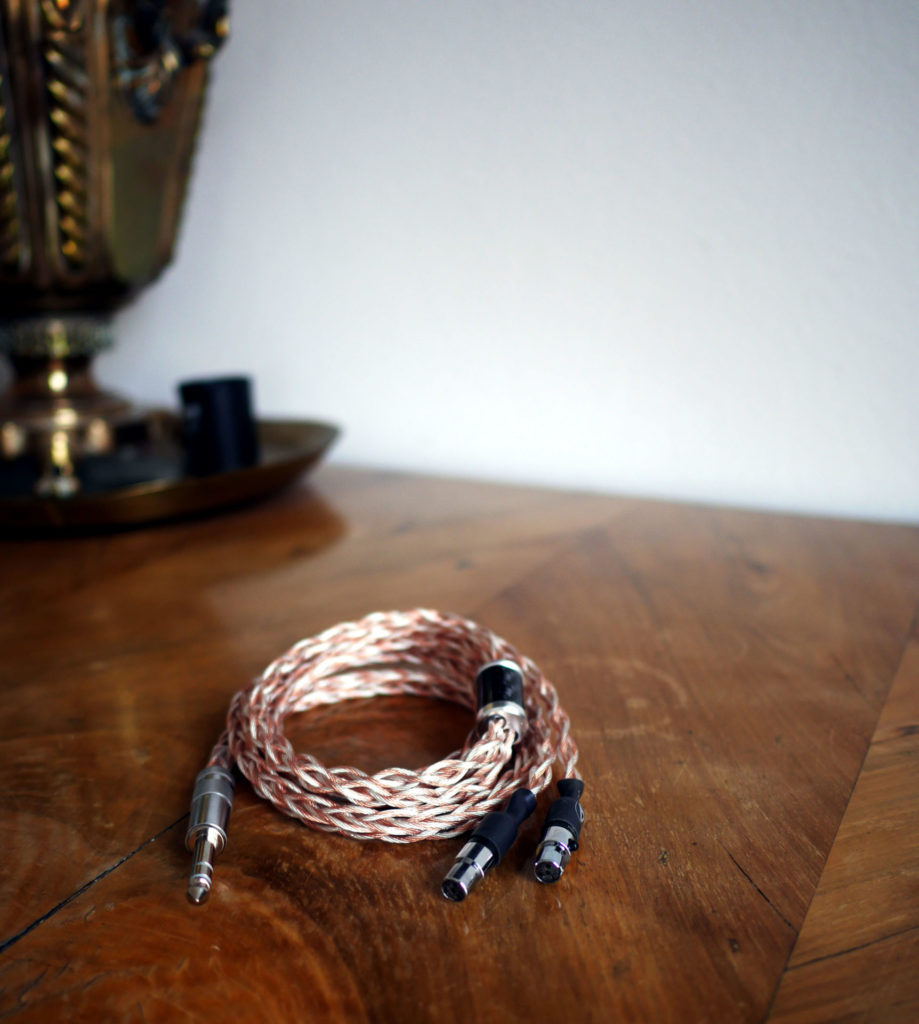
Moving on to sound impressions, between the stock cable and the Grandis cable, the Grandis essentially preserves the tonality and timbre of the Elite, which is a good thing, but generates a more incisive performance. In specific terms, on the Grandis I hear much clearer layering, with better imaging, and a more effortless sense of detail retrieval. There is a greater (grander) sense of “air” in the presentation, with a notably superior holographic presentation. Indeed, I have found that the specialism of Arctic Cables is their holographic sense of staging combined with a pitch black background. These factors seem to contribute to a more authoritative yet equally refined presentation. Compared to the Grandis cable, the stock cable has a more intimate feel, with slightly blurry imaging and layering, and with less clarity especially in the upper mids. The soundstage on the stock cable is also less holographic, and the overall sense of space is more up-front and up-close.

Tonally, the Grandis cable doesn’t transform the timbre of the Elite from one headphone to another. What it does do, however, is offer a better sense of extension and texture across the frequency range. Sub-bass reaches deeper with more definition, mids have better clarity, and the upper mids into the treble offers a more resolving and slightly crispier response without in any sense becoming strident.
Conclusion
In sum, the Elite are undoubtedly an excellent headphone, and genuinely an “endgame” TOTL headphone within the category of open-back headphones. They offer a presentation that is musical yet nuanced. Coupled with the Grandis cable from Arctic Cables, their technical presentation is elevated to another tier, arguably putting them in competition with headphones such as Final Audio D8000 Pro and HiFiMAN HE1000se on a technical level. To this end, the addition of the Grandis cable renders the Elite almost unbeatable in their class.


